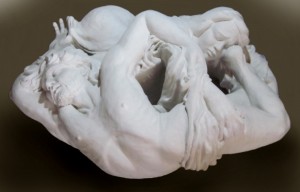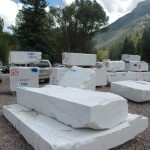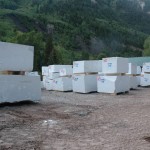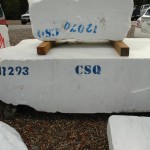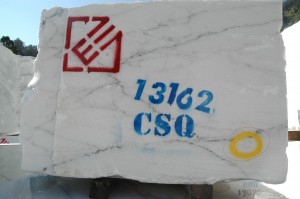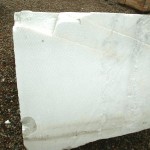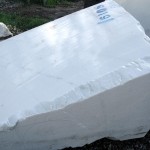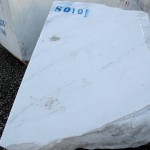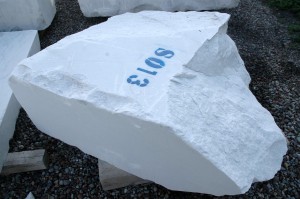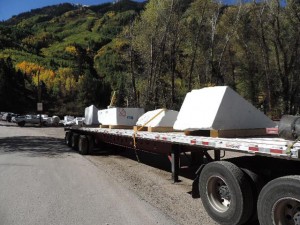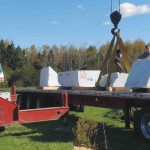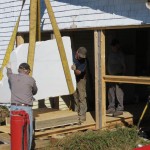
Chapter 1-4
- Choosing your Marble
- Create your Maquette
- Pouring your Plaster Mold
- Casting your Clay Maquette
- Block out your Marble
- Michelangelo’s Method
- Randall’s Gallery
- Randall’s Blog
- “Step by Step” Discovery, Maria dell’Egitto
- Blocking Marble
- Finding the Flaws
- Michelangelo’s method
- Peter’s Rock
- “Step by Step” Peter’s Rock
- Marble Adam & Eve
- Grace
Chapter 5-8
- Kiln Fire your Maquette
- Blocking your Statue
- Sculpting your Statue
- Finishing your Statue
- Block out your Marble
- Michelangelo’s Method
- Randall’s Gallery
- Randall’s Blog
- “Step by Step” Discovery, Maria dell’Egitto
- Blocking Marble
- Finding the Flaws
- Michelangelo’s method
- Peter’s Rock
- “Step by Step” Peter’s Rock
- Marble Adam & Eve
- Grace
Chapter 9-12
- Finding your Statue a Home
- Tools of the trade
- Fix and Repair
- Notes, References, Links
- Block out your Marble
- Michelangelo’s Method
- Randall’s Gallery
- Randall’s Blog
- “Step by Step” Discovery, Maria dell’Egitto
- Blocking Marble
- Finding the Flaws
- Michelangelo’s method
- Peter’s Rock
- “Step by Step” Peter’s Rock
- Marble Adam & Eve
- Grace
Choosing Marble
Michelangelo's Pieta set the standard for sculptural excellence in his depiction of Mother Mary and the crucified Christ. A marble masterpiece of detail and precision.
This new site will examine all the sculpting techniques used to carve marble. And will detail Michelangelo's use of maquette models, his use of tools, and his selection of stone.
Using white marble cut from the great mountains of Colorado, I will saw, hammer, chip and carve unforgiving stone in my humble attempt to create a new Pieta ‘Spero’ that reflects our time. Comparing each step to that of the great Master. Hopefully you will find this step-by-step instructional on how to carve marble as fun to follow as I have had fun along the journey
![]() [whohit]quarry to cathedral[/whohit]
[whohit]quarry to cathedral[/whohit]
Eyeball your stone:
Far from the hustle of Denver, and tucked away from the crowds of Aspen there lies the romantic town of Marble Colorado…
A small gathering of homes and half a dozen shops settled into the valley surround by Purple and Snowmass Mountain.
This is the home of North America’s finest white marble.
Sculptors are all aware of the strengths and weakness of stone. Marble can withstand tremendous pressures when compressed, but can flake and split with the finest touch from a hardened tool. Or can snap and crack along fault lines or stress fissures. Bruised stone can leave pockets of tender talc inches deep. If the natural stone presents any of these flaws, the artist's countless hours of applied talent can be wasted.
This is why the selection of marble is critical… long before you can plan your piece or apply your first hammer blow, you need to apply eyeballs on your stone.
Michelangelo loved marble, the crystalline cream, the fleshy supple hue, the battered bakers dust that floats through the air descending on to the studio floor.
He obsessed with choosing the right stone, flawless and cut to size out of the Cararra Mountains.
This is a lesson for us all. Marble is best cut, never blasted, and always hand selected. If you can, personally select your own piece - regardless of the size.
And this is why Marble Colorado is the place for Sculptors… If you love marble this is one of the few places in North America that you can walk on top, and crawl around monumental marble blocks… This is where stone is sawed using diamond cable blades. Marble is what they know, and I was very fortune to select my stone with the help from Janice of Colorado Stone Quarries...
This is were our journey begins.
Look for Quality
Marble counter tops look better when the stone has a ‘marbled’ colour… that is, swirls of varying tones and shades…. This will enhance the appearance in your kitchen…
The opposite is true for your statue. You are searching for a stone with a single shade throughout with no veins or variations at all… no specks, blotches, … and especially no hidden faults.
Of course, colourations can enhance the beauty of your work, when incorporated into the design, however, when carving the human form, dark shaded veins can distract from the beauty.
A stone without faults is best, but if they are present (and most affordable stone will have at least one) mapping out the fault line, and then working around them is critical if you don’t want your hard work shearing off in unexpected directions. This has happened to us all and nothing feels worse…. I would rather pummel my thumb then crack my statue along a fault….
Michelangelo would fury at the injustice if he had discovered a hidden vein wile carving… His first attempt at the Risen Christ was abandoned over imperfections, and famously he sledged limbs off his later work, the Florentine Pieta.
So while you are playing in the marble pit… find the best you can afford, and then plan to work around the stone you end up blessed with. Adversity will test your abilities.
Our Renaissance Master, whenever possible, hand selected his marble. The exception to this was his most remembered piece, The monumental David.
The original Stone Block was left neglected and exposed to the elements for over 25 years and had shown signs of weather related deterioration.
We know that the original 19 foot behemoth was quarried near Carrara, over 40 years earlier, however, all stone is not created equal, and this marble was of poor quality, being porous and more susceptible to elements.
It is an interesting historical note that almost half a century prior to Michelangelo working on this masterpiece, two previous sculptors, Agostino di Duccio, and later Antonio Rossellino had both attempted and failed to carve this stone…. The complexity of working a 6000lb block would prove too much of a challenge for them (and most of us.)
What they did succeed in doing over their 15 year attempt, is damaging the marble. They had started carving the legs and torso, and had likely drilled holes between the thighs before abandoning the stone entirely.
Then for an additional generation, the partially carved block was left lying flat on the ground exposed to the elements…
It is a testament to Michelangelo’s genius that he was able to create his most revered work with such an ignoble and rejected stone.
A lesson for us all, today as we look through the blocks to start our carving adventure.
Marble should not be left for long lying on the ground… it is porous and will absorb water. Technically, this is called “Rising Damp” If the stone freezes, micro cracks can be formed. Also, the chemical composition of the stone can be changed if salt is used near the quarry… Water, Weather, Salts, Air Pollution, all can cause Spalling, Sugaring, Flaking, Cracking and in general, future Misery…
So spend the time looking for the best….. The finest stone will look like a bar of soap.
Of course, a bar of soap the size of Lexus will cost as much….
A high quality block half the size Michelangelo’s David can easily set you back the same amount as a sporty BMW… or a luxury vacation to the Mountains of Northern Italy…. So unless you work for the Medici Family, or are fortunate enough to have Bill Gates as your patron, you will have to settle for what you can afford.
And then work within the limitations of the stone.
Mapping out Fault Lines
Pope Julius the II had authorized Michelangelo to pick and choose the finest stone, and the Master was keen to spend months hand selecting the cuts and pockets to be quarried. Despite the financial ability to acquire the best marble that the Carrara mountains could produce, imperfections and flaws threatened to surface once the chisel was hammered deep.
Moving marble by Ox and Cart was no easy feet and horrifically expensive, and Michelangelo's time was priceless. He had to be selective.
Today, we need to be equally discriminating… within our budgets. Stone is flawed, there is nothing we can do to improve on nature, but we can live within her limits.
Before you commit to buying the marble, and well before you can plan your piece, you need to map out the fault lines and have a good understanding of the degree and location of veins.
As you look at the stone, before you can visualize the sleeping giant trapped within, you need to understand the final size and shape after faults and flaws have been scythed.
Once the stone is in your studio, you will need to sheer off the sections separated by lines. One large stone may yield two or three smaller pieces.
Dark veins will need to be avoided, cut out, or factored into your design.
Certainly, if you have a monumental project in mind, it is best to buy a block that is oversized… Michelangelo favoured larger blocks with lots of room to move his planned model within the stone… floating as needed between hidden limitations. This was done within his minds-eye… maximum flexibility was part of his genius.
Once you have settled/gambled on your final selection…. You will need to hire your own Ox & Cart to truck you stone home…. Keep in mind that transportation will be a major part of the overall cost…. So fill the flat bed with as much as it will carry… the shipping price will be the same…
Transportation
Michelangelo nearly lost his life moving marble from the Carrara mountains to Rome, and hundreds of labourers he employed risked their lives daily. Rope would snap, stone would fall and men would die. The whole process from selection, to excavation to transportation could take a year or more, and cost ten times more then the marble itself.
Thankfully today, technology has reduced the risk, but still moving tons of stone can be dangerous, and requires professional help.
Colorado Stone Quarries was more than happy to arrange transportation, and Capital Crane had the tools needed to move these blocks safely.
The final push into the studio was more reminiscent of the Renaissance methods. Three men could push the blocks on steel pipes….
With the stone safely in the studio, a full examination can be done, and the plans for our New Pieta can begin.


